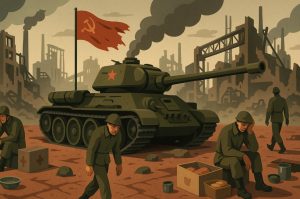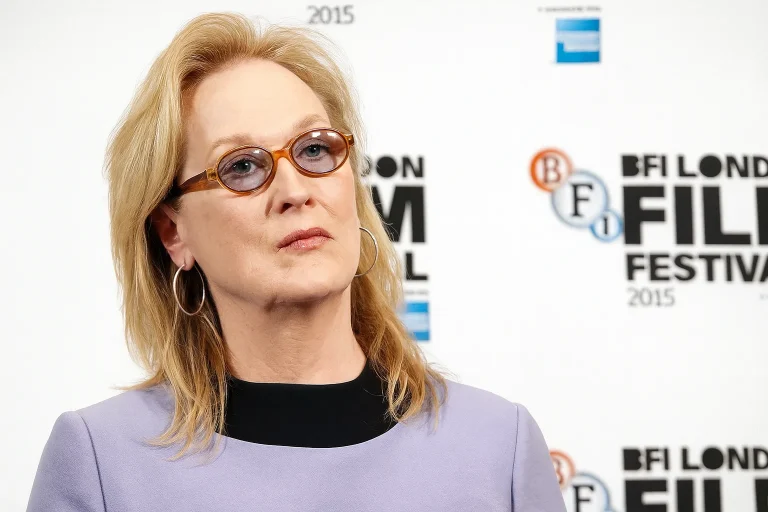Why did one of the 20th century’s most powerful superpowers vanish almost overnight? How did the Soviet Union, once spanning nearly a sixth of the Earth’s land surface and boasting over 290 million citizens, unravel in less than a year?
At the beginning of 1991, the Union of Soviet Socialist Republics (USSR) was the largest country on the planet.
It held vast reserves of natural resources, maintained a fearsome nuclear arsenal, and exerted political influence over Eastern Europe through the Warsaw Pact. Yet, by December of that same year, it had ceased to exist.
The reasons behind the Soviet Union’s collapse are not confined to a single explanation.
Rather, it was the culmination of intertwined political, economic, social, military, and international factors. The legacy of these causes continues to shape modern geopolitics.
What Political Factors Contributed to the Collapse of the Soviet Union?

The rise of Mikhail Gorbachev to General Secretary in March 1985 marked the beginning of the end for the Soviet state as it was known. Gorbachev introduced two critical policies: glasnost (openness) and perestroika (restructuring).
Both were aimed at revitalising the system, but they instead highlighted its deep dysfunctions.
Glasnost and Its Consequences
Glasnost allowed citizens unprecedented freedom of speech and the press. What began as a call for transparency evolved into an open critique of decades of mismanagement and repression.
It exposed the public to the realities of past atrocities, economic failures, and the discontent across various republics.
The media, no longer censored to the same extent, reported on topics that were once taboo: the Stalinist purges, environmental disasters, and ethnic tensions.
Democratic movements gained strength as citizens realised they could demand change.
Perestroika and Policy Paralysis
Perestroika aimed to reform the economy by introducing market mechanisms into the state-controlled system. However, the policy ended up merging the worst aspects of socialism and capitalism:
- Prices were deregulated, but production remained under state control.
- Corruption continued as officials resisted reforms that didn’t benefit them.
- Bureaucracy persisted, blocking meaningful change.
Instead of triggering economic growth, perestroika created scarcity, uncertainty, and inflation. The state lost credibility, and the Communist Party’s grip on power weakened irreparably.
Was the Soviet Economy Already Doomed?
Though the Soviet Union had a massive industrial base and was, by some metrics, the world’s second-largest economy, the command system was inherently flawed.
Production targets replaced consumer needs, and misallocation of resources led to widespread inefficiencies.
Throughout the 1970s and 1980s:
- Shortages of consumer goods became routine.
- Citizens increasingly relied on the black market, which accounted for over 10% of GDP.
- Inflation soared as wages increased without productivity improvements.
A catastrophic drop in oil prices in 1986, from $120 to $24 per barrel, was especially damaging.
As one of the world’s largest energy exporters, the USSR depended heavily on oil revenue. When that dried up, so did the regime’s financial stability.
How Did the Military Burden Weaken the State?

The Soviet military was both a source of pride and a heavy economic burden. Defence spending consumed between 10% and 20% of GDP, diverting resources from essential civilian sectors such as agriculture, healthcare, and infrastructure.
Technological and scientific talent was funnelled into the military-industrial complex. Potential innovators who could have driven a new economy were instead absorbed into defence projects, hindering economic diversification.
The arms race with the United States, particularly during the Reagan administration and initiatives like the Strategic Defense Initiative, forced the USSR to overspend in trying to keep pace.
Unlike the US, it lacked a flexible economy to support such an escalation.
What Impact Did the War in Afghanistan Have on the Soviet Union?
The Soviet-Afghan War (1979–1989) proved to be a strategic and humanitarian disaster. Initially aimed at supporting a friendly communist regime, the war turned into a prolonged conflict against Western-backed mujahideen fighters.
- Nearly 15,000 Soviet troops were killed.
- Over one million Afghans died, and millions were displaced.
- Soldiers returned traumatised and disillusioned.
The war exposed the limitations of Soviet military power and fuelled domestic unrest.
Veterans protested and nationalist sentiments intensified, especially in the Central Asian republics where conscripts shared ethnic and religious ties with Afghans.
In Ukraine and the Baltic states, the war became symbolic of Moscow’s disregard for non-Russian lives. Anti-war protests and calls for independence gathered strength as glasnost allowed criticism of the war to reach the public.
Was Chernobyl a Turning Point?

The 1986 Chernobyl nuclear disaster served as a defining moment in the Soviet collapse. The explosion at Reactor No. 4 in Ukraine released radioactive material across Europe.
The state’s initial response was denial and censorship, consistent with its long tradition of secrecy.
Despite clear evidence of danger:
- Local May Day parades continued as planned.
- Information was suppressed for 18 days before Gorbachev addressed the public.
- Soviet propaganda clashed with people’s lived experience of sickness and contamination.
This event undermined glasnost’s credibility and shattered any remaining public trust in the government. Gorbachev later admitted that Chernobyl, more than any other event, precipitated the collapse of the USSR.
How Did Nationalism Undermine the Soviet Union?
The USSR was a multi-ethnic state with strong Russian dominance. Glasnost and weakening central control emboldened nationalist movements across the republics.
In 1991, several republics voted for independence, with Ukraine’s referendum on 1 December recording a 90% pro-independence result.
The Baltic states, Estonia, Latvia, and Lithuania, declared independence shortly after the failed August coup and were recognised by the UN.
Ethnic tensions also escalated in the Caucasus and Central Asia. Armed conflicts in regions like Nagorno-Karabakh revealed the fragility of central control and the intensity of local grievances.
What Happened During the August 1991 Coup Attempt?
The attempted coup by hard-line Communists on 18 August 1991 marked the final unraveling of Soviet authority. Gorbachev was placed under house arrest in his Crimean residence.
Coup leaders sought to restore control by declaring a state of emergency and transferring power to Vice President Gennady Yanayev.
However, the coup failed for several reasons:
- Gorbachev refused to cooperate.
- Boris Yeltsin mobilised resistance, famously addressing crowds from atop a tank in Moscow.
- The military was divided, and many units defied coup orders.
- Public support for reform and democracy was too strong.
By 21 August, the coup had collapsed. Gorbachev returned to Moscow but was politically weakened. Yeltsin outlawed the Communist Party in Russia, and the Union’s disintegration accelerated.
How Did the United States and the West Respond?

President George H.W. Bush initially supported Gorbachev in the hope of preserving stability. However, as events unfolded, the US adapted its stance, increasingly engaging with Yeltsin and the republic leaders.
In December 1991, the US recognised all 12 new independent republics and established diplomatic relations.
The primary concern was the control of the Soviet nuclear arsenal, leading to the Nunn-Lugar Act which funded disarmament and ensured weapons didn’t fall into the wrong hands.
The US also worked with international institutions to support economic transitions and humanitarian aid.
How Did Yeltsin Shape Post-Soviet Russia?
Boris Yeltsin, elected President of the Russian Republic in 1990, emerged as the most powerful figure in the post-Soviet space after the failed coup.
- He assumed control of Soviet institutions within Russia.
- He banned Communist Party operations.
- He led the effort to establish the Commonwealth of Independent States (CIS).
Yeltsin’s rise marked a clear shift toward national sovereignty over Soviet centralism. Russia became the legal successor to the USSR, inheriting its UN seat and diplomatic missions.
What Officially Marked the End of the USSR?
Following the collapse of the coup and growing declarations of independence, the final step was largely procedural.
| Key Milestones | Description |
| 1 December 1991 | Ukraine’s independence referendum passed with 90% support |
| 8 December 1991 | Russia, Belarus, and Ukraine declared the USSR dissolved |
| 21 December 1991 | CIS was formally created by 11 republics |
| 25 December 1991 | Gorbachev resigned, and the Soviet flag was lowered for the last time |
| 31 December 1991 | The Soviet Union officially ceased to exist |
Frequently Asked Questions
What caused the Soviet economy to collapse?
The command economy couldn’t adapt to global markets, suffered from inefficiencies, and was overly dependent on oil exports. Perestroika worsened rather than improved economic conditions.
How did nationalism affect the USSR’s stability?
Nationalism led to strong independence movements, especially in the Baltic states and Ukraine, ultimately making the USSR ungovernable.
Did the USSR lose the Cold War?
In geopolitical terms, yes. The Soviet Union disintegrated while the US remained intact, with many former Soviet states moving toward Western alliances.
What was the significance of the Chernobyl disaster?
Chernobyl exposed systemic failure and shattered public trust in the state, undermining the ideals of glasnost and accelerating dissent.
Could Gorbachev have saved the USSR?
Many historians believe the collapse was inevitable, but Gorbachev’s reforms hastened the process by exposing weaknesses the regime could no longer hide.
What is the CIS?
The Commonwealth of Independent States was created by former Soviet republics to manage post-Soviet cooperation, though it remains largely symbolic today.
What was Boris Yeltsin’s role in the collapse?
Yeltsin was pivotal in resisting the coup, dismantling the Communist Party in Russia, and leading the formation of the CIS.






